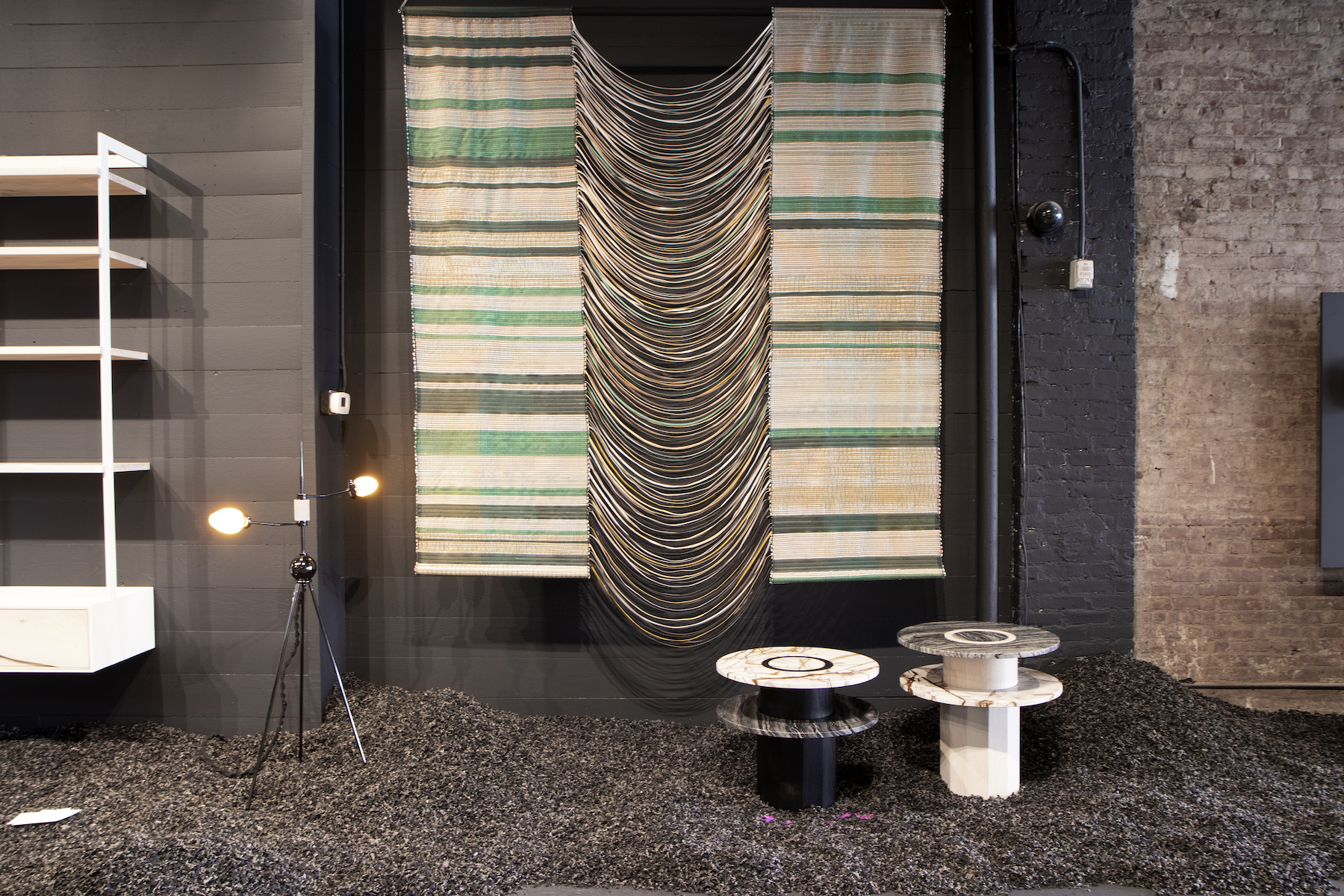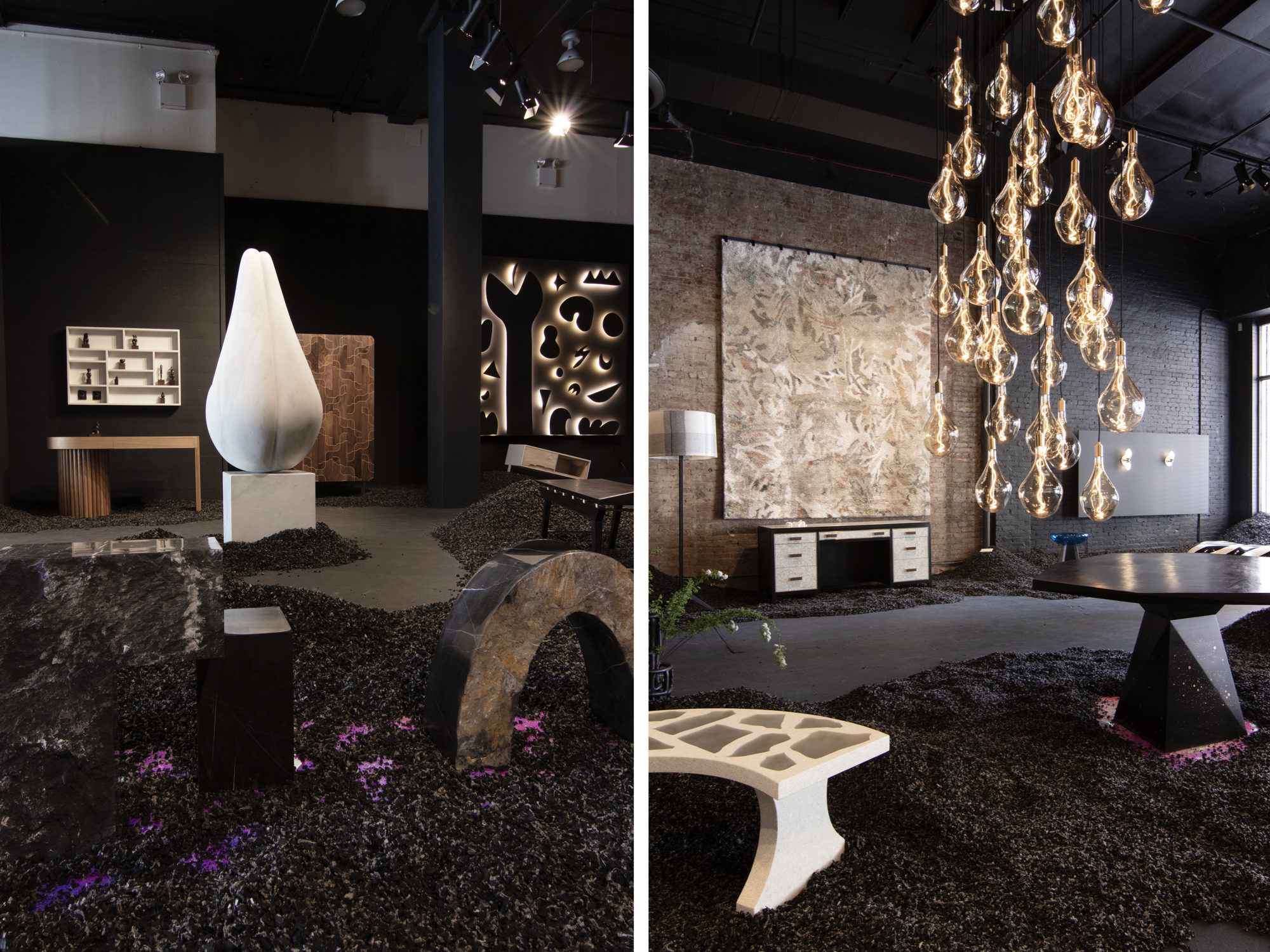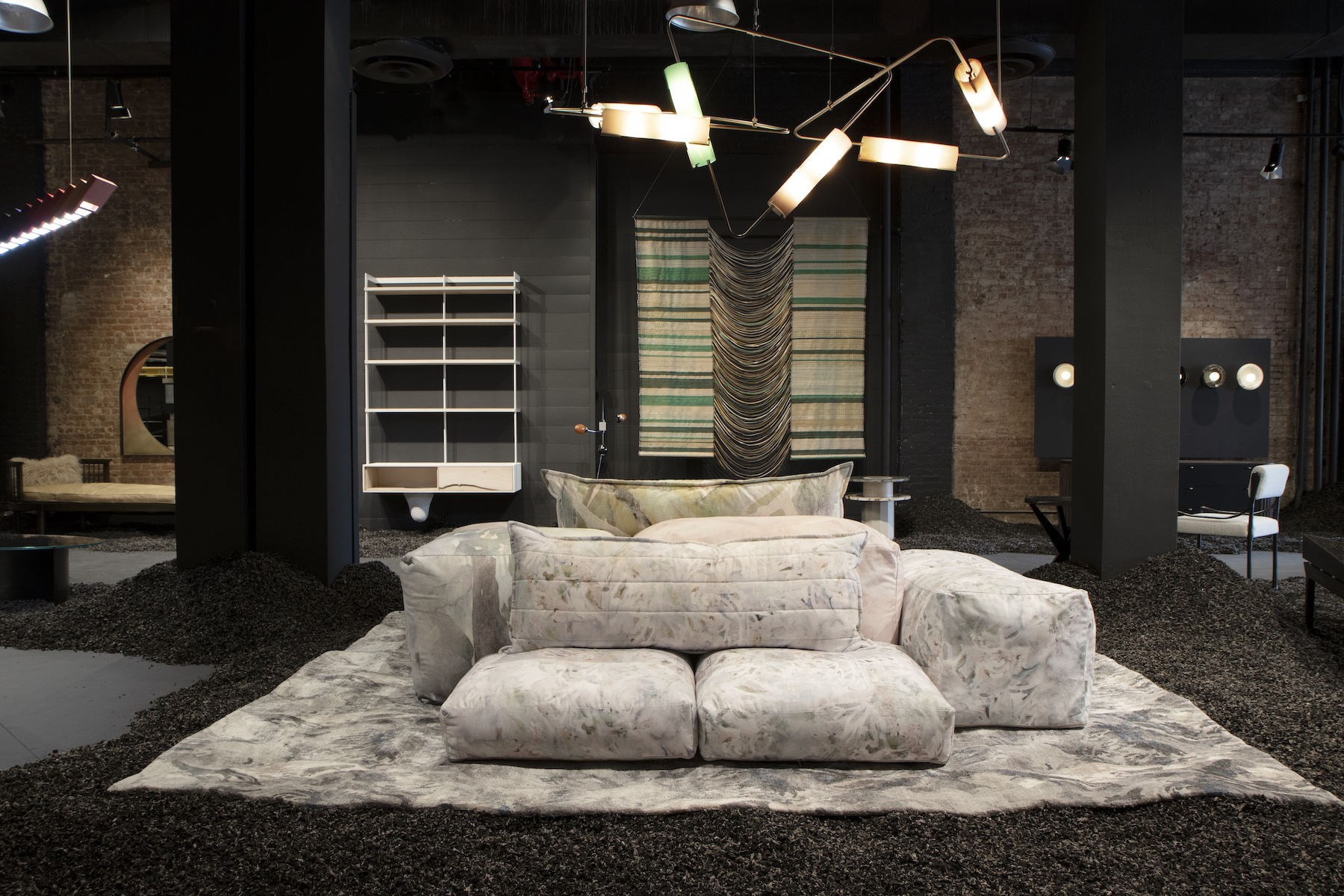Shanan Campanaro, founder of nature-friendly Brooklyn textiles brand Eskayel, co-launched “Next Level,” a pop-up group curatorial platform that champions the work of New York’s tight-knight independent maker community, at NYCxDesign 2018. Now, “Next Level” returns for round two in an enormous NoHo storefront with fellow founders Asher Israelow Studio, Patrick Weder, Hart Textiles, and Here Projects. This year’s edition, however, comes with a few twists—and no shortage of out-of-the-box design work. We catch up with Campanaro during the show’s frenzied preparations.
Inside “Next Level,” NYCxDesign’s Most Ambitious Group Show
Eskayel founder Shanan Campanaro, who co-founded Next Level during NYCxDesign 2018, returns for round two. The show’s long-awaited second edition features a premier roster of more than 40 independent designers who deliver some of their most extraordinary work to date.
Eskayel founder Shanan Campanaro, who co-founded Next Level during NYCxDesign 2018, returns for round two. The show’s long-awaited second edition features a premier roster of more than 40 independent designers who deliver some of their most extraordinary work to date.

Tell us about “Next Level,” the founders, your role, and how it came about.
Shanan Campanaro: “Next Level” is a pop-up gallery during NYCxDesign. It was organized by designers for designers who want to showcase new work outside the traditional trade show booth format. The founders are three couples and designers: Asher and Jamie Isrealow, Patrick Weder and Tamika Rivera, and Shanan Campanaro and Nick Chacona. We all chose who was invited to submit work and reviewed submissions as a group to make the process truly collaborative.
New York is a challenging city for offsite events because it’s expensive to show in a ground-level storefront, but dwindling street retail offers exciting new opportunities for temporary pop-ups. Are you tempted to remain a year-round exhibition space?
SC: We’ve been extremely lucky to have access to 718 Broadway two years in a row. The space’s size and location enable us to create a less traditional environment more akin to exhibitions seen at Milan’s FuoriSalone. We love the idea of remaining in the space year-round, but it’d take much more infrastructure to pull off.

What are some differences between presenting in a smaller group exhibition versus a larger trade show? Do you foresee designers moving in this direction?
SC: We try to make our display integrated and creative so visitors get an immersive experience while viewing each piece in context, rather than regimented into rows of booths. That gets monotonous. By integrating the displays, each piece shines and everyone can have a unique design experience. “Next Level” doesn’t profit and we only charge participants what’s absolutely needed to cover the costs of the show—this way, we’re able to invite the designers we love.
Showing at an established trade fair puts your brand in front of serious attendees. Though they may complain about the format, so many of our clients attend the major fairs each year to discover new products and companies. It’s a good occasion to see many clients face-to-face whom you might otherwise only email all year long, so it helps build those relationships. For more established brands like mine, however, trade shows can become stagnant if you want to do something creative. It’s easy to burn out without pouring more and more money into it, and then it’s difficult to tell if it’s even worth it.
What were some challenges last year, and how did you apply what you learned to this show?
SC: That show happened so fast! It’s incredible that it came together the way it did. The biggest challenge was the amount of work it took to prepare the space and how little help we had. I didn’t see my husband, Nick, the whole week before the show—he was working early mornings until well past midnight the whole week. Their biggest challenge was lighting. We rented lights which didn’t work, so we ended up readjusting the space’s existing lighting.
We had much more time to plan this year. We also financed last year’s entire show ourselves, which wasn’t possible this time. We also enlisted help with graphics and communications which is so necessary for decent foot traffic.

Are there any curatorial approaches to the show? How are pieces placed in context after the designer submits work?
SC: We requested out-of-the-box pieces that push the boundaries of each participant’s regular repertoire. Keeping in line with our mission, the exhibition supports our community of furniture makers, so we first asked our friends as well as designers whom we greatly admire. Some submissions we immediately loved, while others we asked to rework or rethink into something truly exceptional.
Each piece is situated once it arrives. We used cinder blocks as displays last year and have an equally odd display situation up our sleeve this time around.
What are you most excited about for the show?
SC: Our display idea! It’s super fun. But we also can’t wait for the lantern show, which will feature more than 70 New York–based artists and textile designers who decorated lanterns donated by Pearl River Mart, with bulbs and cords donated by Tala. We devised the show as a way to give back and are donating proceeds to the Robin Hood Foundation.
“Next Level” is on view from May 18–24 at 718 Broadway, New York.
